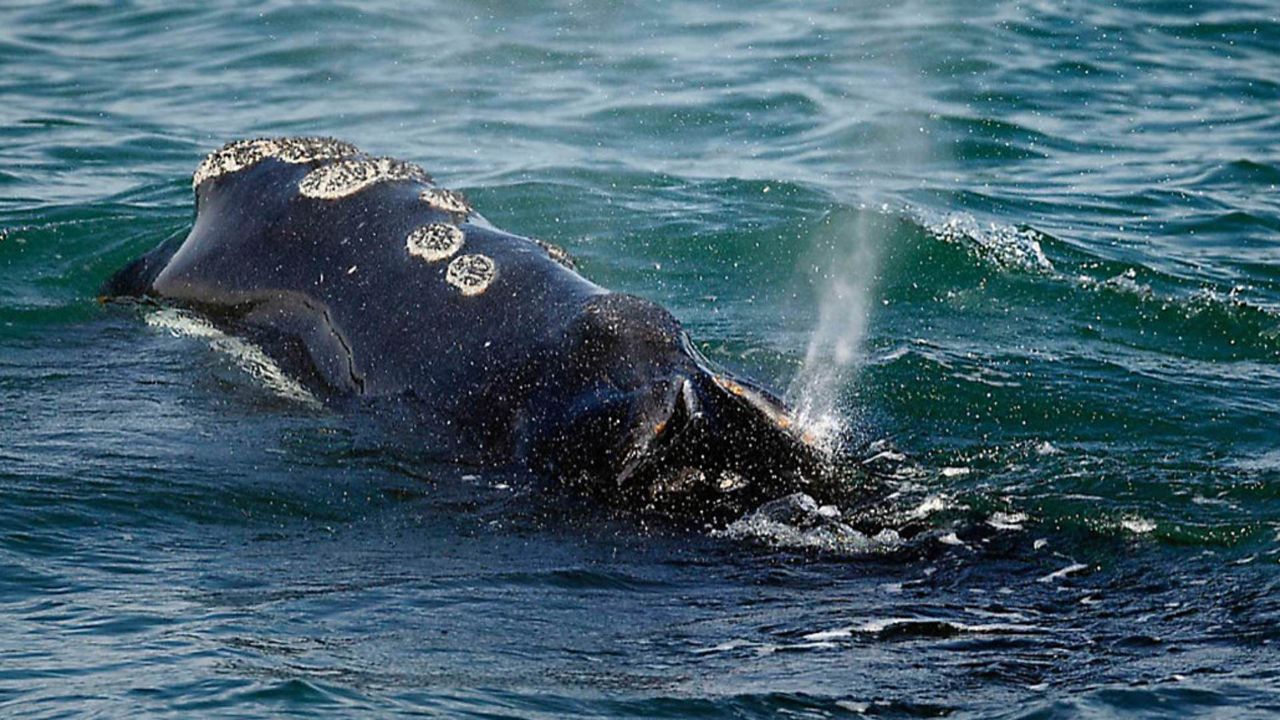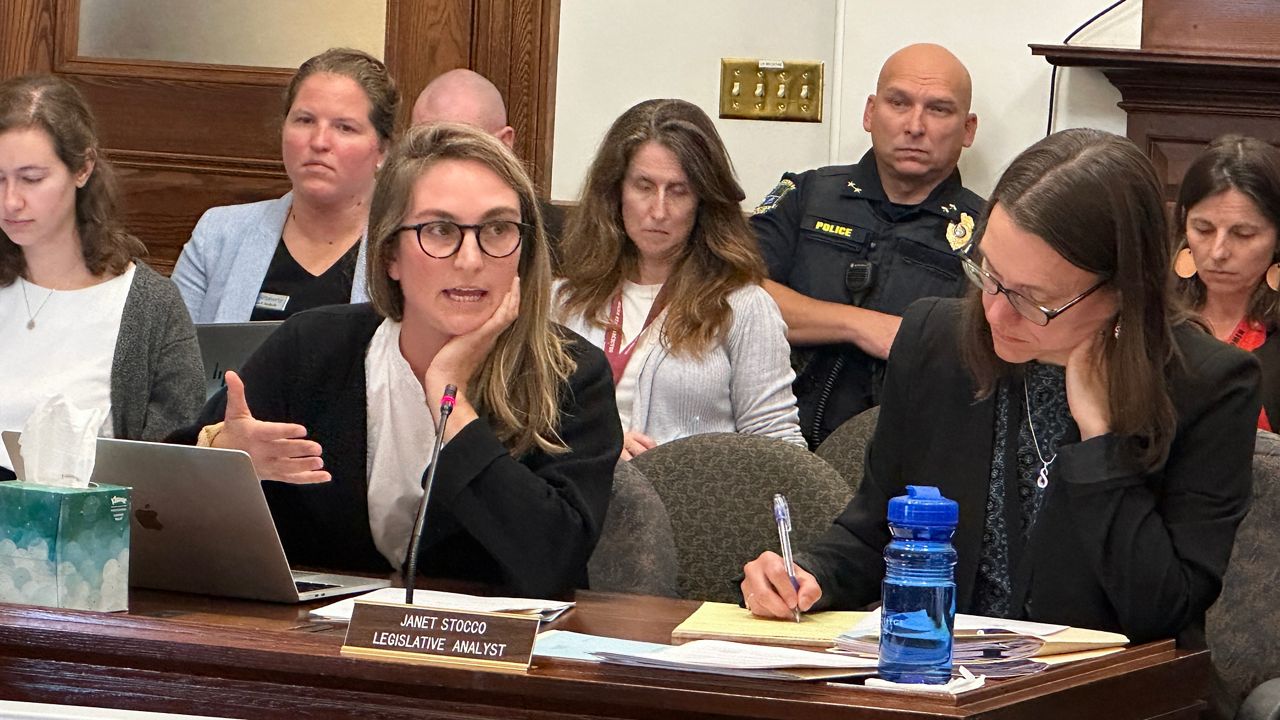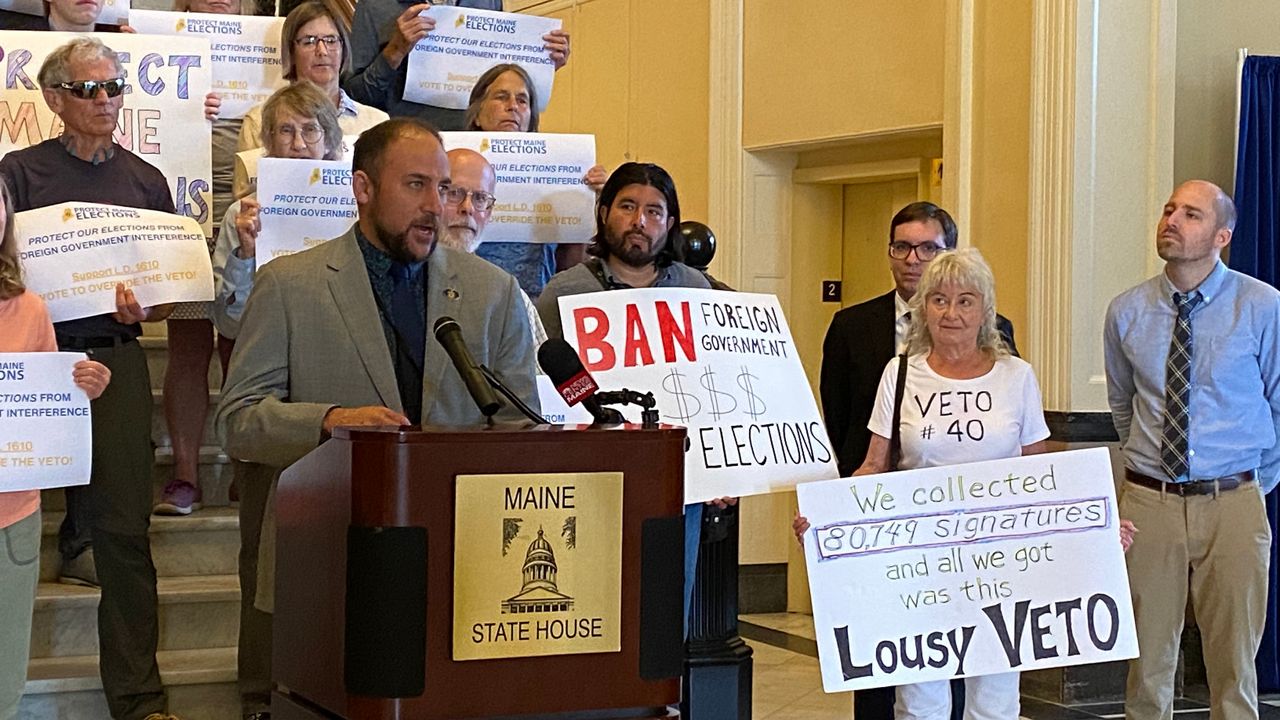Scientists dedicated to saving North Atlantic right whales from extinction say they are optimistic they can work with the fishing industry to save the species.
But they were blindsided last month when Maine’s congressional delegation put language in the federal budget to delay for six years regulations that are designed to protect the whales.
Amy Knowlton, a senior scientist at the Boston-based New England Aquarium, said the impact of a six-year delay in regulations could be “dramatic.”
“It’s mind-boggling that this would be allowed to happen,” she said.
Knowlton said the whales are a critically endangered species. They were nearly hunted to extinction in the 1890s and have been protected from hunting since 1935.
Today, there are only about 340 whales left and they are experiencing a continued decline that shows more whales are dying than are being born, according to the Atlantic Right Whale Consortium, a conservation group.
“Now they are struggling because they are becoming entangled in fishing gear and because of vessel strikes up and down the eastern seaboard,” Knowlton said.
Just last week, the federal government ruled that the whales will continue to be protected under the Endangered Species Act.
But the Maine lobster industry has fought hard against new regulations designed to protect the whales, saying lobstermen aren’t to blame for the whales’ continued decline.
Backed by Gov. Janet Mills and the state’s congressional delegation, the industry won a major victory with the six-year delay.
“Without our provision, Maine’s iconic industry could be facing a complete shutdown — and the ripple effects across our state would have been widespread,” Mills and the delegation said in a Dec. 20 statement.
The industry has maintained that no right whale death has been attributed to Maine lobster gear and the last entanglement in Maine gear was in 2004.
Yet Knowlton said studies show 86% of the right whale population has been entangled in fishing gear at least once. They can drag the gear around for years in their mouths and fins.
One issue is that North Atlantic right whales travel close to shore, typically within 50 miles of the coastline from Florida to Canada, putting them at risk for ship strikes and entanglements, according to the aquarium.
In 2022, five whales were observed with fishing gear attached and five others came into contact with fishing gear “with entanglement injuries significant enough to cause wounds and scars,” according to an October report from the aquarium.
In addition, there was one detected vessel strike to a right whale last year.
With fishing expanding off-shore and growth in the industry, there’s more and more gear in the whales’ path. And it’s not just a problem for right whales, but other whales such as the minke and humpback, Knowlton said.
Maine has about 4,750 commercially licensed lobstermen and 1,085 student license holders, according to the Maine Lobstermen’s Association. The fleet supports 12,000 “jobs on the water” and an additional 5,500 shoreside jobs through its supply chain.
Last year also proved particularly difficult for the industry. Whole Foods phased out Maine lobster sales following a red list designation by Seafood Watch that advised consumers not to buy it.
Knowlton said although Maine lobstermen are using weaker ropes that break more easily when a whale becomes entangled, it’s not enough.
Weak points in the lines are not down deep enough to help whales who become entangled near the sea floor, she said. She said weaker rope is “an interim measure” as technology toward ropeless lobster traps progresses.
Michael Moore, a senior scientist at the Wood Hole Oceanographic Institute in Massachusetts, is one of the scientists working to help develop the ropeless technology.
He said the idea for ropeless traps has been around since at least 2010, but that it wasn’t until recently that the technology has been tested on boats from the mid-Atlantic up to Maine.
One challenge is that lobster traps are now marked by a surface buoy that signals to all fishermen that there is a trap or traps below. Without the buoy, all fishermen will need a universal way to communicate, which could be an acoustic signal, Moore said.
The other major obstacle is the cost.
“If we had $100 million, we’d get it done in a couple of years,” he said.
Moore, who is a veterinarian, said he’s also concerned that the conversation needs to turn to restoring the reproductive health of the whales. There are longer intervals between births because of injuries suffered in ship strikes and gear entanglements, he said.
Moore said he doesn’t blame fishermen who are responding to consumer demand for products transported by ship and for seafood brought up from the ocean floor.
Yet he’s sensitive to the whales suffering human-caused injuries.
“If what was going on with chronic entrapment was happening on the streets of Portland, Maine, we wouldn’t put up with it,” he said. “We don’t see it.”
Knowlton said it is possible for scientists and the fishing industry to work together to find a solution that works for everyone.
“Nobody wants to shut down the fishing industry,” she said. “It’s important to do this in an integrated, collaborative fashion. I feel some level of optimism that if we work together, we can turn the tide around for the species.”







)

